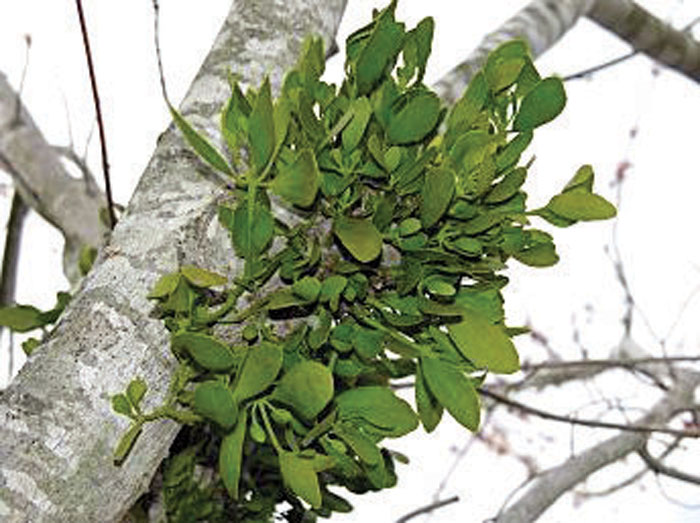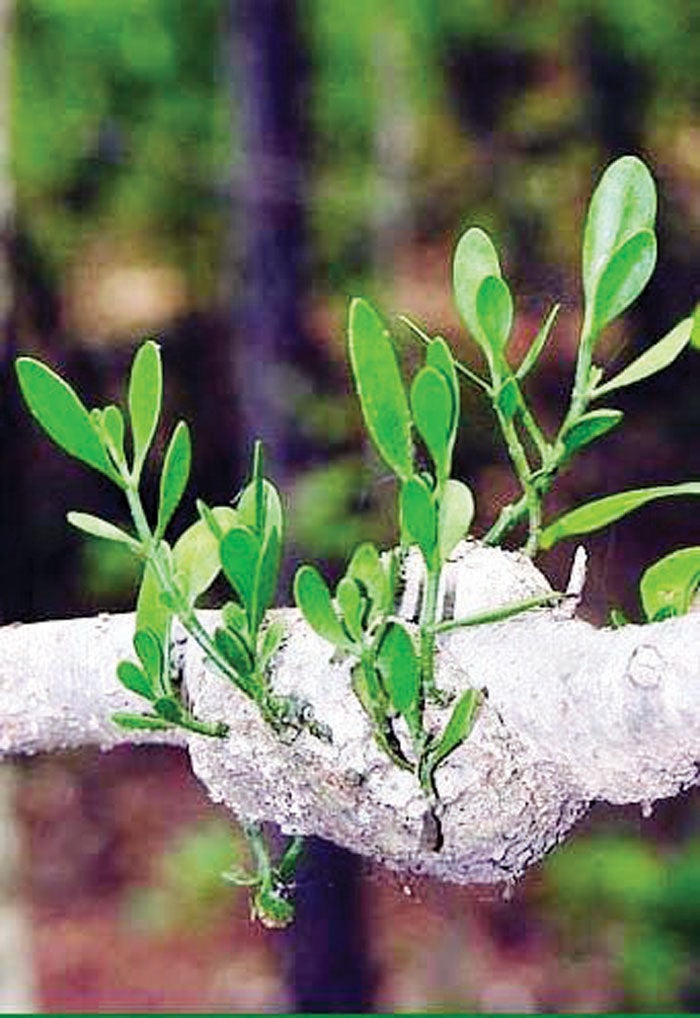Darrell Blackwelder: Mistletoe is actually a parasitic plant
Published 12:00 am Saturday, December 17, 2022

- Mistletoe
When was the last time you were kissed under the mistletoe? The attractive plant is common decoration during the Christmas holidays, inspiring loving behaviors. Mistletoe in fact, is a parasitic plant that infects many tree species worldwide. Mistletoe grows mainly in hardwoods and is easily found on oaks and maples throughout Rowan County after fall leaf drop. Fortunately, the parasitic plant causes little damage to the growth and development of our trees.
The plant is able to produce much of its own chlorophyll, so its leaves have a healthy green color, however it derives most of its nutrients from the xylem or water conducting vessels of the host tree.
Mistletoe has white, round, translucent berries that are spread easily by birds all over the tree. The seeds are coated with a sticky layer allowing the seeds to readily stick to the bark. The seeds germinate by sending a modified root into the host cambium layer for nutrients. It takes a year or so for the plant to become established on the host tree. Once the mistletoe roots are established the evergreen plant grows quickly and is easily identified after leaf drop in the fall.
Traditionally, mistletoe is used to decorate the doorway and leading those inside to beautiful dreams as well as a place to exchange a kiss of peace.
Darrell Blackwelder is the retired horticulture agent and director with the North Carolina Cooperative Extension Service in Rowan County. Contact him at deblackw@ncsu.edu.




